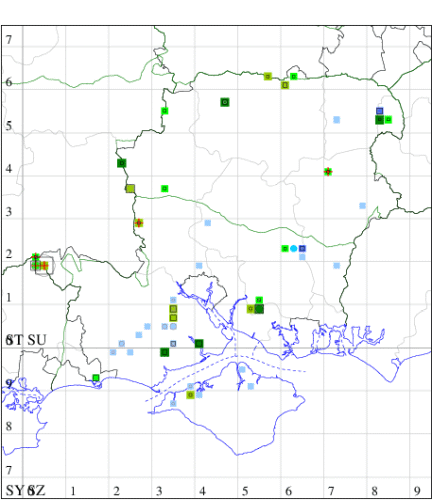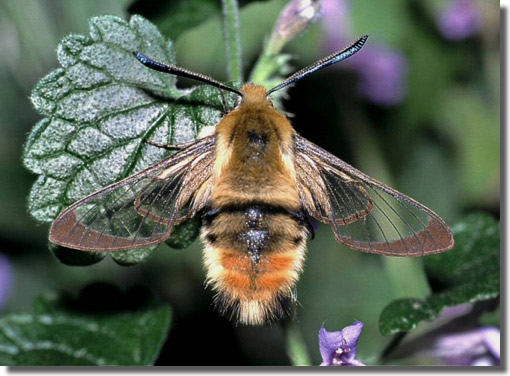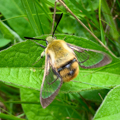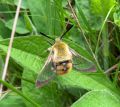Narrow-bordered Bee Hawk-moth
Hemaris tityus
Checklist Number69.008 [B&F: 1982]
Verification
Record will require further evidence, at least a good photograph, unless CMR is aware recorder has confidence in identification
Classification
| Family: | Sphingidae |
| Subfamily: | Macroglossinae |
| Genus: | Hemaris |
| Species: | tityus |
| Authority: | (Linnaeus, 1758) |
Nationally scarce (Nb) on unimproved calcareous grassland and chalk downland in south-western England, with scattered colonies in northern England, Wales and western Scotland, a priority species under the UK Biodiversity Action Plan. In Hampshire and on the Isle of Wight formerly local and moderately common, now much reduced in numbers, and there was no sighting on the Isle of Wight since 1950 until one turned up in 2014. It is still reasonably frequent on Martin Down and is seen from time to time at sites such as Botley and Bentley Woods. Wingspan 41-46 mm. The most likely confusion species is Broad-bordered Bee Hawk H. fuciformis, which has a large brown discal spot and a broader terminal fascia on the forewing, and reddish bands on the abdomen compared to two blackish bands for tityus. Larva feeds on Devil's-bit Scabious, Small Scabious and Field Scabious, over-wintering as a pupa.


The abundance in each month is indicated as follows:
 No records
No records Very occasional
Very occasional Irregular
Irregular Uncommon
Uncommon Off-peak, but not unusual
Off-peak, but not unusual Off-peak, but not unusual
Off-peak, but not unusual Main flight time
Main flight time| J | F | M | A | M | J | J | A | S | O | N | D | |
|---|---|---|---|---|---|---|---|---|---|---|---|---|
| Adult |  |  |  |  |  |  |  |  |  |  |  |  |
| Larval |  |  |  |  |  |  |  |  |  |  |  |  |








